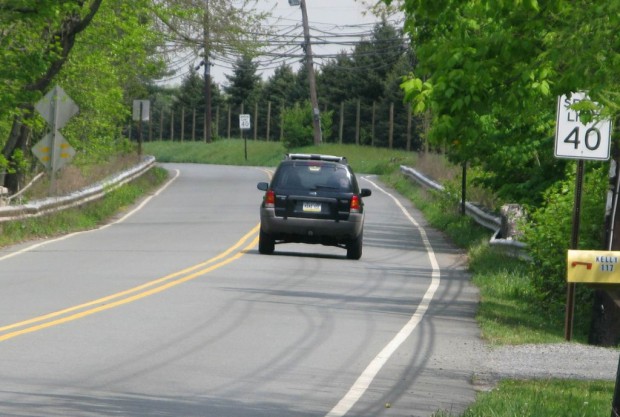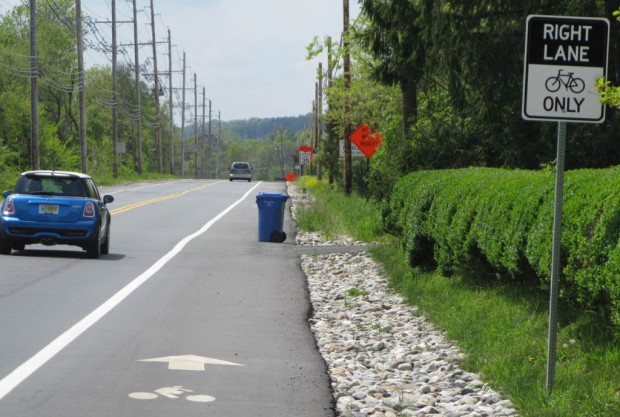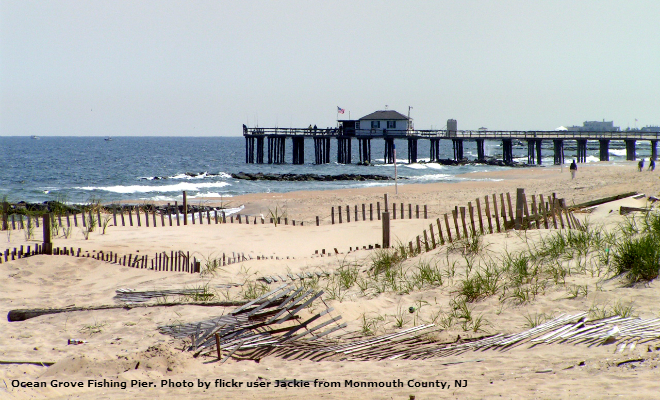New Jersey Future Blog
Hopewell Becomes First Municipality in New Jersey To Adopt Complete Streets Ordinance
July 2nd, 2014 by New Jersey Future staff
In July 2010, Monmouth County became the first New Jersey county to adopt a Complete Streets policy, modeled after the New Jersey Department of Transportation (DOT)’s own policy adopted in December 2009. Over the next four years, other counties and towns slowly began to adopt their own Complete Streets policies, many modeled on the state policy. New Jersey was also one of the first ten states in the nation to make Complete Streets an official internal policy. In June of this year, Hopewell became the 103rd municipality to adopt such a policy and the first municipality to do so via a Complete Streets ordinance. According to Township Administrator/Engineer Paul Pogorzelski, “We decided that this policy should be in the form of an ordinance and have the weight of law rather than simply be part of a resolution which does not transcend governing body changes.“
In amending and supplementing its general ordinance governing streets and sidewalks, the township declared that it was making a commitment to creating street corridors that will accommodate road users of all ages and abilities and will give consideration to all types of uses. Going forward, Hopewell promises to work to retrofit as many streets as possible so that they will be amenable to pedestrians, cyclists, and all types of vehicles and in order to make them feel safer for all users, including children, older citizens, and the mobility-challenged.
According to the ordinance, Hopewell’s amended streets and sidewalks will contain design provisions meant to encourage safe routes to schools and trail crossings and to create attractive, vibrant, pedestrian-friendly, and livable neighborhoods that do not rely entirely on automobiles. By implementing its Complete Streets policy via ordinance, Hopewell is helping to ensure that its residents will benefit from a healthier lifestyle, less traffic congestion, and reduced reliance on carbon fuels, thus mitigating greenhouse gas emissions. As with most Complete Streets policies, the township has allowed exceptions in cases where adherence to the Complete-Streets ordinance would be cost-prohibitive or would compromise safety.What Is a Complete Streets Policy, and Why Is It Important?
A Complete Street is a road that has been designed with all potential users in mind. Currently many roads are designed to accommodate cars and their drivers. A Complete Street takes into account travel by pedestrians, bicyclists and public transit users as well as motorists. The roads are designed and built to accommodate several different modes of transportation simultaneously, and to take into consideration the needs of all users, regardless of age and ability.
How Can a Town Benefit From Adopting Its Own Complete Streets Policy?
Only a small percentage of roads in New Jersey are controlled by the DOT. When the DOT Complete Streets policy was adopted in 2009, there was some concern that while municipalities control most of their roads, they would not be interested in adopting their own similar policies. Realizing this, the DOT included incentives for towns to adopt Complete Streets policies through the local-aid grant funding its Division of Local Aid and Economic Development makes available. Towns win this funding based on a point system; an applicant can garner a maximum of 25 points for their application, one of which is available if the town has adopted a Complete Street policy or ordinance. Complete Streets policies can also earn towns 20 points toward Sustainable Jersey certification.
DOT information and resources on Complete Streets
DOT information on developing a Complete Streets implementation plan
Sustainable Jersey guidance on Complete Streets




















But CR518 is a county road. Hopewell can’t touch it. I know, I have been poking Mercer County for years trying to get help for that piece of road.